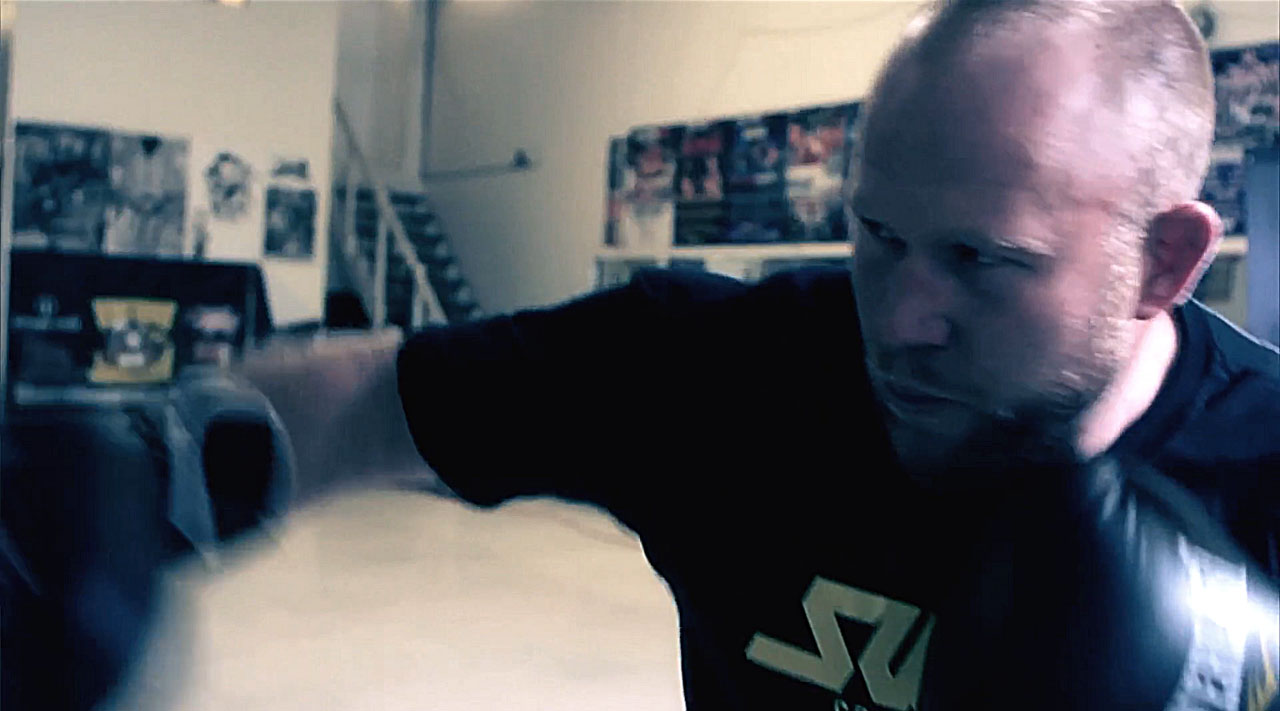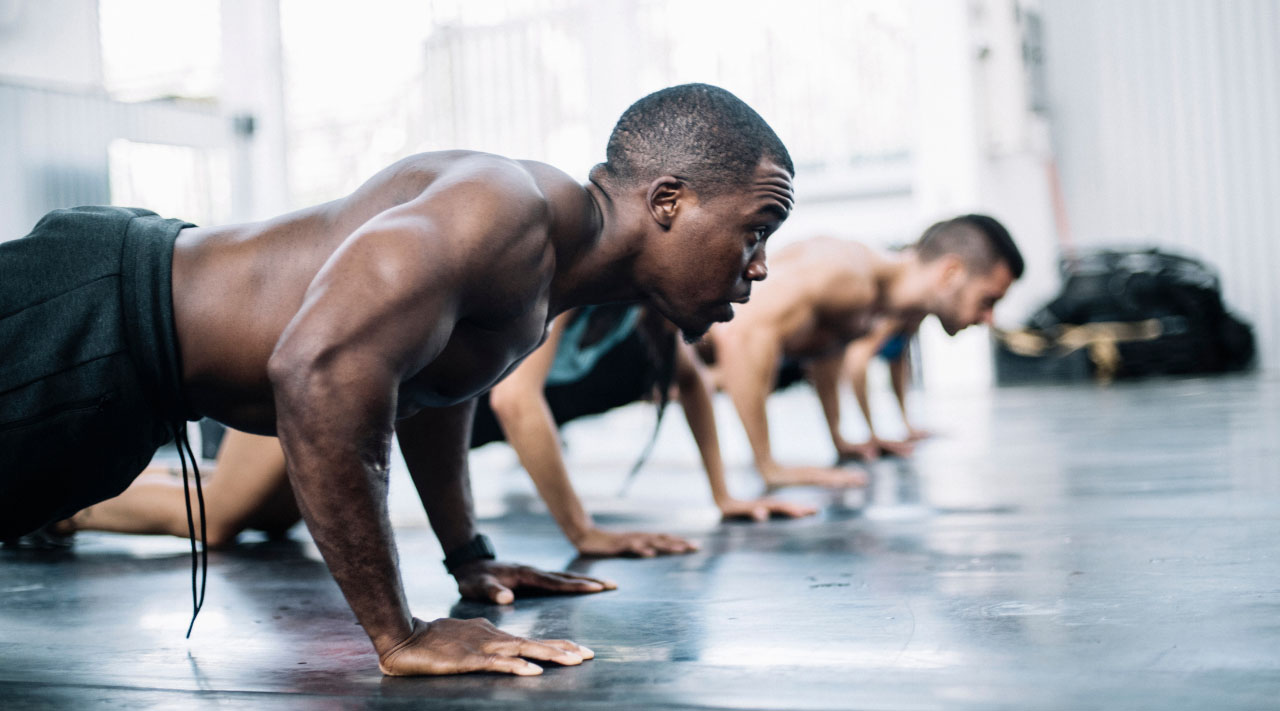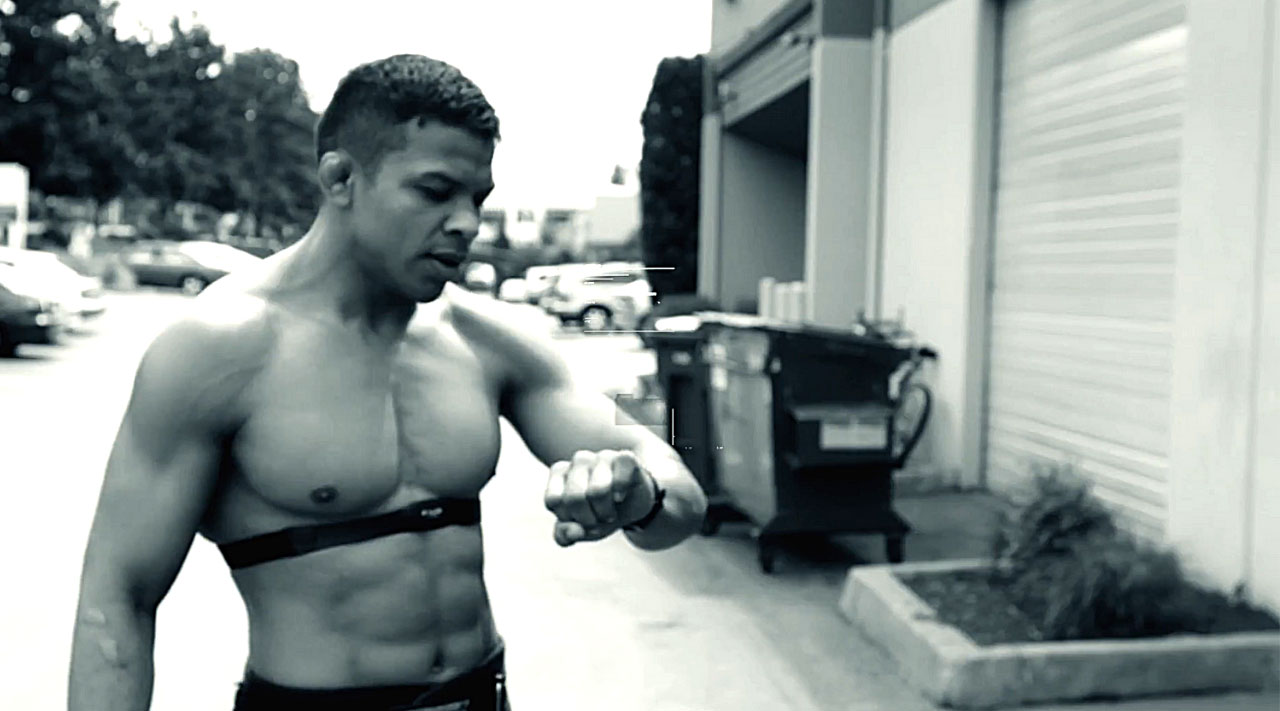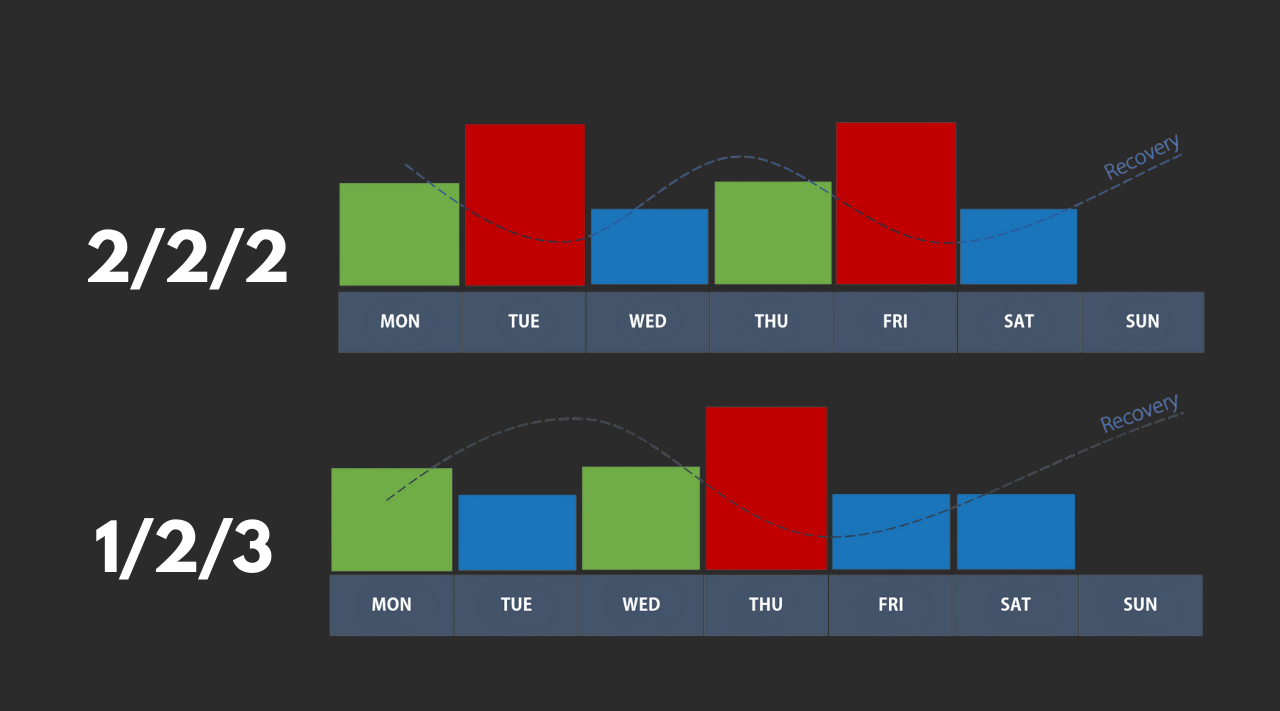
To build conditioning to the highest levels takes only two things: consistent effort and the right program.
Over the years, I’ve found that most people that come to me because they need to improve their conditioning haven’t been falling short because they weren’t willing to put in the work.
They’ve been unable to reach their goals because they didn’t have the right program.
The truth is that if your training program is broken, then it doesn’t matter how hard you work. You’ll just end up tired, run down, and probably worse off than when you started.
To help make sure that doesn’t happen to you, I want to share my top five strategies for building an effective conditioning program. The kind that leads to long-term results and better health, fitness, and performance—not fatigue and frustration.
1. Start with a conditioning assessment

Knowing how strong or explosive you are is a relatively easy thing to figure out. There are endless ways to see how you stack up. You can either lift a certain weight, or you can’t.
When it comes to conditioning, however, people often have a much more difficult time knowing how to measure it. One big problem with this is that if you don’t know where you’re starting from, it makes it a lot harder to know if you’re improving or not.
So before you start implementing any of the strategies covered in throughout this article, the first thing to do is figure out where your conditioning baseline is at.
If you’re unsure how to do that, you can use part of the conditioning assessment I teach in my BioForce Conditioning Certification as a starting point:
- Run as far as you can in 12 minutes
- Measure your heart rate recovery in 60 seconds
- Max rep push-ups
- Max rep pull-ups
- Front plank – up to 3 minutes
Going through this assessment will give you an idea of your general cardiovascular fitness, as well as your muscular endurance—two of the biggest keys to conditioning.
Along with these tests, it’s also highly valuable to start tracking resting heart rate and heart rate variability (I recommend Morpheus for this) because both of these correlate highly with aerobic fitness and general conditioning.
2. Put conditioning at the beginning of your workouts

One of the biggest reasons people fail to improve their conditioning is because it’s often treated as an afterthought of each workout. They do a few minutes of intervals or a “finisher” at the end of their strength workout to make themselves as tired as possible.
There are two big problems with this.
The first is that by the end of a workout, you’re already tired. Your mental focus and energy levels are depleted. You don’t have the ability to train at the same level as you did at the beginning of the workout.
The second problem is that it takes more than the 10-15 minutes people typically put into this type of training to improve conditioning. It would be like only doing a few sets of a single exercise and then wondering why you aren’t getting any stronger.
The reality is that the body only has so much energy that it can expend during a workout. Whatever you need to improve the most should go at the beginning of your workout, not the end.
That’s why when I write for people that need to improve their conditioning, the majority of the workouts start with conditioning right after the warm up. Strength, accessory work, and the cool down comes after that.
If you’re worried this will cause you to lose strength or muscle mass, that brings me to strategy number 3.
3. Put strength and power in maintenance mode

After evaluating literally hundreds of conditioning programs over the years, one of the main problems I’ve seen over and over again is that people almost always incorporate too much strength and/or power work.
I used to do the same thing before I really started digging into learning the conditioning side of things.
This is probably because the internet is filled with articles and “experts” driving the idea that anything that isn’t heavy or high intensity is going to make you slow and weak.
It’s easy to be afraid of losing all of your hard-earned strength or muscle if you start lifting less.
The truth, however, is that if you truly want to improve your conditioning, that’s exactly what you have to do.
The reason is simply that the body has a fairly limited capacity to adapt to the stress of training. Unless you’re starting from ground zero, your body can’t improve everything at once.
Bodybuilders know this principle extremely well. They often spend months, or even years, trying to improve one single body part that they feel is their weak point.
To see real improvement in any area of fitness, you have to focus the majority of your training time on what you’re trying to improve the most. There is no way around this.
Trying to improve strength, power, and conditioning at the same time is a recipe for failure.
The good news is that if you’ve built a decent base of strength, you can most often maintain it with somewhere between 60-70% of your normal training volume.
This is generally enough to keep what you’ve developed.
As long as you’re not putting yourself in a big caloric deficit, you won’t lose a bunch of muscle just because you’re upping your conditioning either.
4. Use a heart rate monitor the right way

When used effectively, a heart rate monitor is one of the most powerful conditioning tools there is.
That’s because it can help you dial in the right intensity, monitor progress, teach you how to manage your energy, and even help prevent plateaus and overtraining.
When used the wrong way, however, it does none of those things and it can even do more harm than good.
What’s the difference between the right and wrong way?
Well, the wrong way is to use it as a way to see how high you can drive your heart rate all the time.
Whether it’s because you’re using a HR system that’s giving you more points for higher heart rates or you think fatigue is your conditioning friend, this is exactly what you should never use a heart rate monitor for.
That’s because it’s based on the mistaken and outdated idea that making yourself tired with high intensity over and over again is the best way to improve conditioning.
Trust me, it’s not.
This type of heart rate training leads to terrible movement quality, increases your risk of injury, and ultimately sabotages your recovery. This approach is exactly why so many people hit conditioning plateaus and never seem to get any better despite working hard day in and day out.
So, what’s the right way to use a heart rate monitor?
Well, first and foremost, you should use a heart rate monitor to get better at learning how to manage your energy effectively. This is a big piece of conditioning and it’s something a lot of people simply never work on.
The easiest place to start doing this is by working to keep your heart rate at different levels as you’re training. This is called dynamic heart rate control.
You can see how one of the best-conditioned athletes of all time is able to do this in the video below:
This type of training also opens the door to an extremely effective way to do intervals that I called ZBIT—Zone-Based Interval Training.
Unlike the way most interval training is done these days, where the work interval is as hard as you can go (max intensity) and you do nothing during the rest interval, ZBIT is much more dynamic and targeted.
Using heart rate zones to dictate both the work and the rest period allows for more targeted and personalized training. That’s because it incorporates a much wider range of intensities than HIT to target different energy systems and it uses active rest periods to drive faster recovery and deliver better results.
Using the 3 heart rate zones of my Morpheus system, you can see an example of different types of ZBIT below. Each represents a different level of intensity and targeted energy system.
To learn more about Morpheus and ZBIT, click here.
5. Train, Recover, Repeat

The difference between just doing a bunch of workouts and following an actual conditioning program is the way the workouts are put together each week.
The wrong way to try to improve your conditioning is to have no connection from one workout to the next and think the goal of each one is to push yourself to the brink of exhaustion.
The right way, on the other hand, is to build a weekly plan that uses different volumes and intensities in a way that leads to continuous improvement without plateaus and/or injuries.
This takes a bit more thought and planning than just walking into the gym and trying to smash yourself day in and day out, but it’s also the only way to get to real, sustainable results.
The most effective way to build a weekly plan is to think in terms of both training and recovery.
That’s because the goal of each week needs to be to find the right balance between the stress of training and the recovery from it.
Train too much or recover too little and sooner or later, you’ll pay the price.
As I’ve written about in recent articles like this one, the best way to build your training week is around the train, recover, repeat model.
This model uses three different types of workouts:
RED: These are the high-intensity workouts where you drive your heart up near your max and push yourself into fatigue. The key to this type of workout is that it’s done with a purpose and you don’t let your technique and movement quality completely fall apart as you get tired.
Remember, fatigue is a byproduct of hard training. It’s not the goal.
GREEN: Because you can’t go hard day in and day out, there’s a ton of value in workouts that are a step down from your max. You should generally shoot for around 80-90% of your max HR for green workouts and keep them to roughly an hour or less.
BLUE (Rebound): The purpose of using what I call “Rebound” workouts is to actively help the body recover faster. They do this by driving blood flow, stimulating the nervous system, and helping to shift the body towards the recovery state.
I’ve written extensively about how to do rebound workouts and you can download a free template in this article.
Building your weekly conditioning program
Although there are almost endless ways to build a week using these three types of workouts, the two variations I use 90% of the time is what I call the 1/2/3 and 2/2/2.
The 1/2/3 is best for anyone with low-to-moderate conditioning and overall fitness levels. With 1 red, 2 green, and 2-3 blue (Saturday is optional), it delivers the right combination of volume, intensity, and recovery for the vast majority of people that have busy lives but know they need to up their conditioning.

The 2/2/2 is the way to go for someone with a reasonably good base of fitness and conditioning to start with. This typically means a resting rate at least in the low 60s and a reasonably good performance in the conditioning assessment.
Whichever you go with, or if you use your own variation, the key is to focus on making sure that you’re starting each week without still being fatigued from the previous one.
That’s because it’s the accumulation of fatigue from one week to the next that ultimately sabotages your recovery and results. It’s why so many people hit plateaus and never really improve even though they’re putting in the work.
The problem is that you can get away with overtraining/under-recovering for a few weeks at a time, but it always catches up with you sooner or later.
The train, recover, repeat, model of weekly training is the best way to prevent that and make sure your conditioning never hits a wall.
Putting it together (and what to do next)
Over the years, I’ve found that more often than not, the reason people struggle to consistently improve their conditioning isn’t because they aren’t working hard enough.
I’ve seen some of the best fighters in the world put themselves through hell in training camps only to gas out in the first round.
Working harder wouldn’t have prevented this.
What a lot of people never quite figure out is that the key to improving conditioning is consistency much more than intensity.
No matter where you’re starting from, stick with the 5 conditioning strategies I’ve laid out above and you’ll be able to consistently improve your conditioning and reach your goals.
What to do next
If you want to start with a complete, done-for-you 8-week conditioning program, make sure to get on the early notification list for my upcoming Metamorphosis launch.
I’ve built this program from the ground up and designed it to transform your conditioning using the same proven strategies and science-backed methods I’ve used with the world’s top pros.
If you enter your name and email below, I’ll let you know as soon as the program is ready to go and give you a special discount for getting in early.
